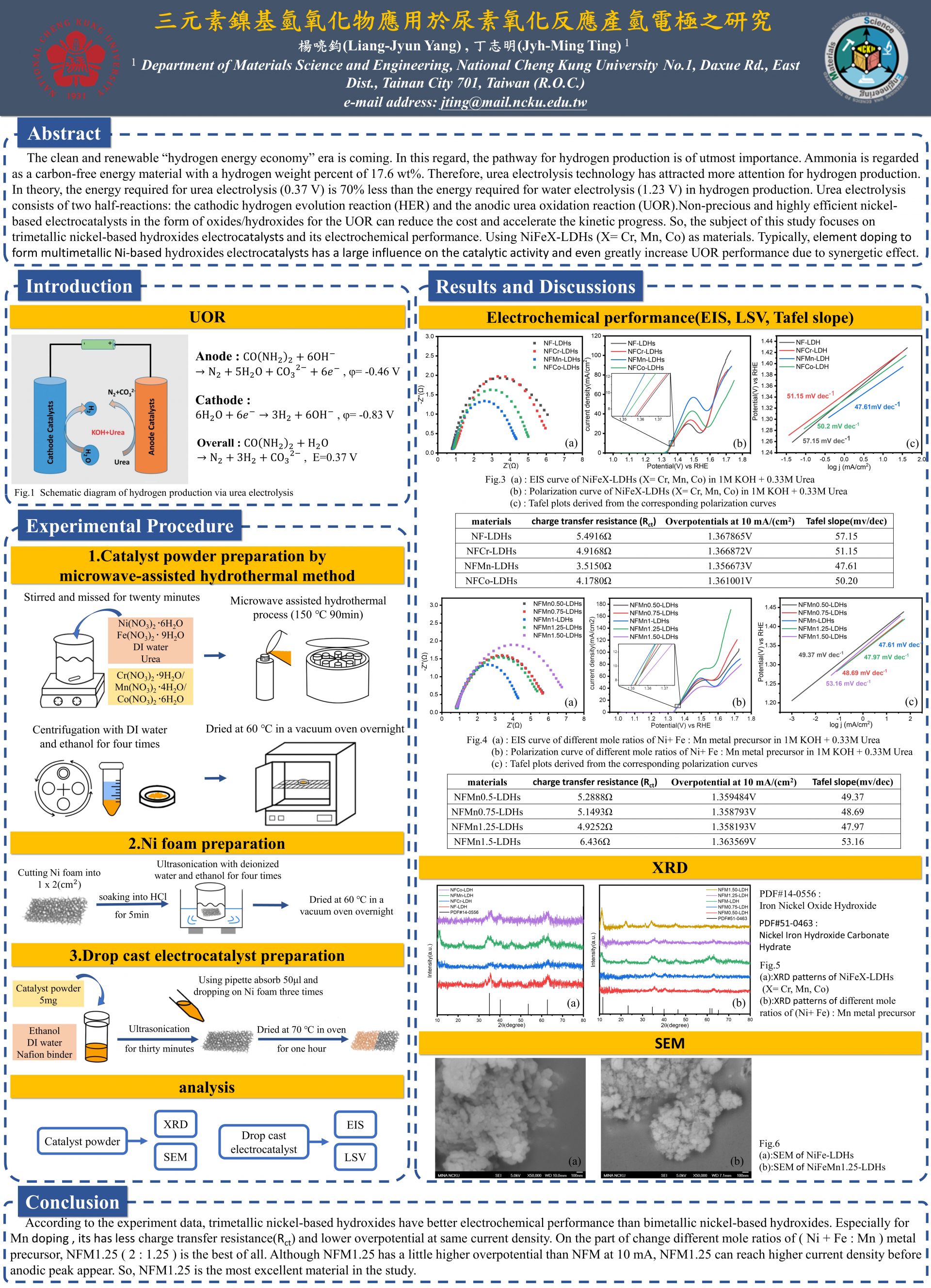參賽序號:03
海報主題
三元素鎳基氫氧化物應用於尿素氧化反應產氫電極之研究
系級
材料科學及工程學系
指導老師及參賽學生
指導老師:丁志明
參賽學生:楊喨鈞
構想說明
The clean and renewable “hydrogen energy economy” era is coming. In this regard, the pathway for hydrogen production is of utmost importance. Ammonia is regarded as a carbon-free energy material with a hydrogen weight percent of 17.6 wt%. Therefore, urea electrolysis technology has attracted more attention for hydrogen production. In theory, the energy required for urea electrolysis (0.37 V) is 70% less than the energy required for water electrolysis (1.23 V) in hydrogen production. Urea electrolysis consists of two half-reactions: the cathodic hydrogen evolution reaction (HER) and the anodic urea oxidation reaction (UOR). Non-precious and highly efficient nickel-based electrocatalysts in the form of oxides/hydroxides for the UOR can reduce the cost and accelerate the kinetic progress. So, the subject of this study focuses on trimetallic nickel-based hydroxides electrocatalysts and its electrochemical performance. Using NiFe-LDHs and NiFeX-LDHs (X= Cr, Mn, Co) as materials. Typically, element doping to form multimetallic Ni-based hydroxides electrocatalysts has a large influence on the catalytic activity and even greatly increase UOR performance due to synergetic effect. According to the data, trimetallic nickel-based hydroxides have better electrochemical performance than bimetallic nickel-based hydroxides. Especially for Mn doping, it has less charge transfer resistance (Rct) and lowest overpotential of 1.35667 V at 10 mA/cm2. On the second part of study, we changing the mole ratios of (Ni+ Fe : Mn) metal precursor. However, NiFeMn1.25 is the best of all. Although NiFeMn1.25-LDHs and NiFeMn-LDHs have similar overpotential at 10 mA/cm-2, NiFeMn1.25-LDHs can reach higher current density before anodic peak appear.


 113年活動,現正報名中!
113年活動,現正報名中!